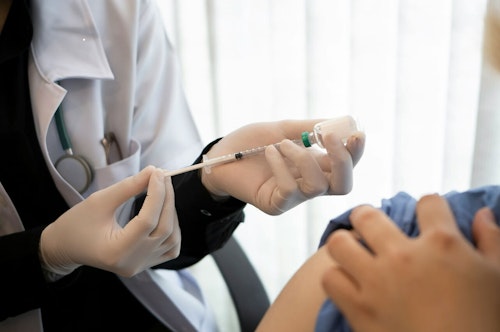Key takeaways:
- Those who received their COVID-19 vaccination in the follicular phase (before ovulation) saw an average cycle length increase of one day
- There was no change in cycle length for the unvaccinated group and for those who received their vaccine in the luteal phase (the second phase of the menstrual cycle after ovulation)
This analysis follows on from previous research we have carried out on the effect of the COVID-19 vaccine on US users and on the wider population. In these studies, external researchers and the Natural Cycles Research Team found that those who received both COVID-19 vaccine doses in the same cycle experienced a temporary increase in cycle length of four days on average. However, those who received their vaccines across two or more cycles didn’t experience any changes to their cycle.
These results brought up more questions – why is cycle length affected when both vaccine doses are taken in the same cycle? With this in mind, we wanted to investigate if the timing of when in the cycle the vaccine is taken can help explain why this happens.
In this latest study, we analyzed cycles from 19,497 Natural Cycles users who had consented to their anonymized data being used for research. They were divided into three groups: vaccinated in the follicular phase, vaccinated in the luteal phase, and unvaccinated. We then compared the cycle length before and after vaccination for the vaccinated groups and with the unvaccinated control group. Only users with regular cycles (between 24 and 38 days) prior to vaccination were included in this study.
The results showed that the group who were vaccinated in the follicular phase saw an average increase in cycle length of one day in the vaccination cycle, and this happened both for the first and second vaccine doses. The change was temporary and was not seen anymore in the following cycles. For those vaccinated in the luteal phase and the unvaccinated group, there was no change in cycle length during the study period.
Those who received their vaccine in the follicular phase were also more likely to experience a larger change in cycle length of eight days or more compared to the other two groups.
There are some theories about why vaccination in the follicular phase would affect the cycle length. Cycle length is largely determined by when ovulation happens (later ovulation will generally result in a longer cycle since the luteal phase length usually remains stable), and the timing of ovulation can be affected by a number of things, like illness, stress, etc. The vaccine triggers an immune response – the symptoms can vary from a sore arm to a fever or feeling unwell after the vaccination – and it’s possible that this immune response may also affect the cycle length by delaying ovulation if the vaccine is taken in the follicular phase.
This study brings more insights into how COVID-19 vaccines affect the menstrual cycle. While more research is needed in this area, for example, focusing on those with irregular cycles, the results can help reassure those looking to get vaccinated and give information on what to expect. It’s also important to keep in mind that everyone is different, and while some may experience a change in their cycle after vaccination, others may not. If you have questions or concerns about vaccination, it’s important to bring it up with your healthcare professional.
Original Paper
Written by
Freya Eriksson, Customer Communications and Translations Manager
